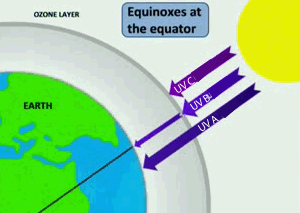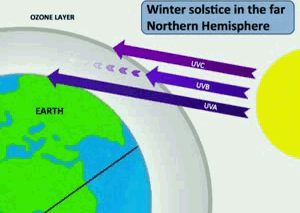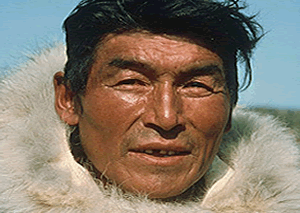
If ever anyone wanted proof of evolution our skin colour should provide it. When someone says "Give me proof of evolution" you simply have to point to your skin.

Red patches relate to high doses of UV while the grey relates to low doses. This shows a strong correlation with skin colour.
The earliest humans evolved in equatorial regions of our planet. There is little doubt that our ancestors were dark skinned. When you look at the UV falling on the earth at the equator you will see high levels of UV A radiation and to a lesser extent UV B radiation penetrating the atmosphere and reaching the surface. Our ancestors were bombarded with UV A and UV B, UV C, the most energetic of the three, was absorbed by the atmosphere. It so happens that UV B radiation is particularly destructive and damages our DNA causing skin cancer, but, it is also extremely important as it catalyses the formation of vitamin D in our body. Vitamin D is important in calcium absorption and strong bone formation, strong immune system and many other essential functions in our body.
UV radiation penetrates deep into the skin where it breaks down folate in the blood. Folate is an important molecule for the formation of healthy sperm in males and the healthy development of the foetus in females.

Melanin is found in many organisms and is been around on earth for a billion years in one form or another. Melanin was recruited through evolution to provide a natural sunscreen for humans living in high UV regions. The fact that melanin protects against skin cancer should not put selective pressure for dark skin. Skin cancer generally develops later in life as a result of exposure to UV radiation and after the reproductive years of an individual. What ever the reason for melanin inclusion in the skin it had to be related to reproductive advantage. It is most likely that folate damage was the selective pressure that resulted in dark skin as low levels of folate would damage sperm and the foetus.
Melanin, being a polymer that acts as a natural sunscreen, served to absorb UV and protect from the harmful effects such as DNA damage and folate degradation. However this proved to be a balancing act, on one hand we have the benefits of UV in vitamin D formation and on the other the destructive effects on DNA and folate.
People living near the equator compromised their skin colour in order to get the benefit of the two conflicting physiological needs of UV radiation, by developing moderate pigmented skin that can darken during periods of strong UV radiation.


The need for healthy individuals put a selective pressure for mutants with low pigmentation.
The speed of human travel around the globe has put people at risk. Light coloured individuals are more at risk of skin cancer and low folate levels in places near the equatort while dark skinned people may suffer health risks from low vitamin D production at high latitudes.

Governments have recognised this problem and have issued health warnings for light coloured people in equatorial locations, such as Australia, and even allowed extra folate to be placed in food items, such as bread. Skin cancer warnings are also common place on radio and television as the video on the right shows.
The problem with dark skinned people living in high latitudes is even more troublesome as vitamin D deficiency creeps up on people over many years and not quickly noticed.

What is melanin?
Why is the strength of UV radiation on earth closely related to skin pigment?
Skin cancer affects people later in life after their reproductive years. Would dark skin have evolved to protect against skin cancer? Explain.
Production of folate, on the other hand, does influence reproductive capacity. Would this put selective pressure for the evolution of dark skin? Explain.
What is the health concerns for people moving from low to high latitudes and vice versa?
What skin colour would one expect Eskimos to have? Explain.
Why was lighter skin not selected for in the Eskimo population?
What is the danger for the Eskimo population if they adopt a western diet?